sara; a historyblr sideblog. + prehistory, anthropology, & mythology
Don't wanna be here? Send us removal request.
Photo


On January 22, 1901, Victoria, Queen of Great Britain and Ireland and Empress of India, passed away at the age of 81 at the royal residence on the Isle of Wight, marking the end of her 63-year reign.
Victoria had celebrated her Diamond Jubilee in 1897, which marked the 60th anniversary of her accession to the throne and made her Britain’s longest-reigning monarch up to that point. By this time, old age had begun to take its toll, and the queen suffered from failing eyesight and had trouble walking, among other health issues. By Christmastime of 1900, which she spent at Osborne House on the Isle of Wight, her health had further declined, and after the New Year she suffered a stroke and was confined to her bed.
Her family was alerted to her poor health, and her children who were able gathered at her bedside—as did her grandson Kaiser Wilhelm II of Germany. Victoria passed away at 6:30 p.m. on January 22. She had written her funeral wishes three years earlier, which included being dressed in white and laid in her coffin with various mementos and keepsakes. Per her request, Victoria was given a military funeral and was laid to rest at Frogmore Mausoleum, in Windsor, alongside her husband Albert, who had died in 1861.
People around the world mourned Victoria’s death. Her reign had lasted 63 years, and for many people, she had been queen for their entire lives. The London Times wrote, the day after her death:
To most of us the whole course of our lives as subjects of the Queen has been the proof of the admirable way in which this unique woman—whose small frame was permeated, so to speak, with Royal dignity, whose home life was so simple and pure, and whose intelligence […] was […] formed by work and long experience into a powerful instrument of life—has met the difficulties of the longest and the fullest reign in English history.
The queen’s death was literally the end of an era. Her death marked the end of the Victorian Era, which spanned 1837 to 1901, the years of her reign. Though just 18 years old at the time she became queen, over the course of her life Victoria oversaw Britain’s transition to an industrialized nation, as well as its expansion into the British Empire.
253 notes
·
View notes
Text

On this day in Royal history
7 January 1536
Katharine of Aragon died
👑 Katharine was Queen of England from June 1509 until May 1533 as the first wife of King Henry VIII.
◼ Catherine of Aragon (Spanish: Catalina de Aragón), also spelled Katherine, she also signed her name as 'Katharine' and for this reason I prefer use this version of her name.
◼ Katharine was born at the Archbishop's Palace in Alcalá de Henares near Madrid, on the night of 16 December 1485. She was the youngest surviving child of King Ferdinand II of Aragon & Queen Isabella I of Castile.
◼ Katharine was quite short in stature with long red hair, wide blue eyes, a round face, & a fair complexion. (although in the majority of movies or tv shows you will find she is generally portrayed as having dark brown hair)
.
◼ She was descended, on her maternal side, from the English royal house; her great-grandmother Catherine of Lancaster, after whom she was named, & her great-great-grandmother Philippa of Lancaster were both daughters of John of Gaunt & granddaughters of Edward III of England. Consequently, she was third cousin of her father-in-law, Henry VII of England, & fourth cousin of her mother-in-law Elizabeth of York!
◼ Katharine studied arithmetic, canon & civil law, classical literature, genealogy & heraldry, history, philosophy, religion, & theology. She had a strong religious upbringing & developed her Roman Catholic faith that would play a major role in later life. She learned to speak, read & write in Latin, & spoke French & Greek. She was also taught domestic skills, such as cooking, dancing, drawing, embroidery, good manners, lace-making, music, needlepoint, sewing, spinning, & weaving.
◼ Katharine was betrothed to Henry VII’s infant son Arthur, at the age of three. They first met on 4 November 1501 & married 10 days later at Old St Paul’s Cathedral – both were 15 years old. They lived at Ludlow castle where she became Princess of Wales. Just six months later Arthur was taken ill with sweating sickness & died.
◼ When Katharine of Aragon travelled to London, she brought a group of her African attendants with her, including one identified as the trumpeter John Blanke. They are the first Africans recorded to have arrived in London at the time, & were considered luxury servants. They caused a great impression about the princess & the power of her family. Little is known of John Blanke's life, but he was paid 8d per day by Henry VII, & a surviving document from the accounts of the Treasurer of the Chamber records a payment of 20 shillings to "John Blanke the blacke trumpet" as wages for the month of November 1507, with payments of the same amount continuing monthly through the next year. He also successfully petitioned Henry VIII for a wage increase.
◼ In 1507, she held the position of ambassador for the Spanish Court in England, becoming the first female ambassador in European history
◼ After Arthur’s death she was subsequently promised to Arthur’s younger brother Henry VIII, five years her junior, partly to avoid having to return her 200,000 ducat dowry. They married in a private ceremony in the church of the Observant Friars outside Greenwich Palace in 1509. She was 23 years old & the king was a few days away from his 18th birthday.
◼ Her marriage to Henry had depended on Pope Julius II granting a special dispensation because canon law forbade a man to marry his brother’s widow. Katharine testified that her marriage to Arthur was never consummated & as such was not valid.
◼ Katharine became pregnant six times providing two sons & a daughter. The other children died at birth. Both sons were named Henry Duke of Cornwall, however neither survived more than a few months. Her surviving daughter later became Mary I of England, Elizabeth I’s half sister.
◼ Henry appointed Katharine Regent, or Governor, of England while he went to France on a military campaign. King James IV of Scotland declared war on England & when the Scots invaded she ordered Thomas Lovell to raise an army in the midland counties. Katharine rode north in full armour to address the troops, despite being heavily pregnant at the time. After the English victory at the Battle of Flodden, she sent Henry a piece of the bloodied coat of King James who had died in the battle.
◼ Katharine’s badge depicts a pomegranate, an ancient symbol for fertility & regeneration & in the Christian church is a sign of Christ’s resurrection. It would have been seen as a promise of heirs that her marriage should have brought. Her motto was ‘Humble and Loyal’.
◼ The controversial book ‘The Education of Christian Women’ by Juan Luis Vives, which advocated women’s right to an education, was dedicated to & commissioned by her in 1524, for the education of her daughter Mary.
◼ When Henry VIII became tired of Katharine & her inability to produce a male heir he asked the Pope to annul the marriage, claiming the earlier dispensation to be was invalid. Thomas Cranmer encouraged Henry to overrule the pope & so the links with Rome were severed as Henry declared himself Supreme Head of a new Church of England. Newly appointed Archbishop of Canterbury, Thomas Cranmer declared Henry & Catherine’s marriage null & void. Henry then married Anne Boleyn.
◼ Katharine refused to accept Henry as Supreme Head of the Church in England & considered herself the King's rightful wife & queen, attracting much popular sympathy. Despite this, she was acknowledged only as Dowager Princess of Wales by Henry. After being banished from court, she lived out the remainder of her life at Kimbolton Castle, & died there on 7 January 1536, her tomb is situated in Peterborough Cathedral. English people held Katharine in high esteem, & her death set off tremendous mourning.
◼ In late December 1535, sensing her death was near, Katharine made her will, & wrote to her nephew, the Emperor Charles V, asking him to protect her daughter. She then penned one final letter to Henry, her "most dear lord & husband":
My most dear lord, king & husband,
The hour of my death now drawing on, the tender love I owe you forceth me, my case being such, to commend myself to you, & to put you in remembrance with a few words of the health & safeguard of your soul which you ought to prefer before all worldly matters, & before the care & pampering of your body, for the which you have cast me into many calamities & yourself into many troubles. For my part, I pardon you everything, & I wish to devoutly pray God that He will pardon you also. For the rest, I commend unto you our daughter Mary, beseeching you to be a good father unto her, as I have heretofore desired. I entreat you also, on behalf of my maids, to give them marriage portions, which is not much, they being but three. For all my other servants I solicit the wages due them, & a year more, lest they be unprovided for. Lastly, I make this vow, that mine eyes desire you above all things.
Katharine the Quene.
102 notes
·
View notes
Photo




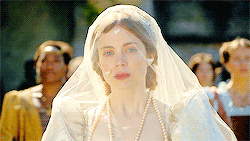



“But for her sex she could have surpassed all the heroes of history.”
—Thomas Cromwell
720 notes
·
View notes
Photo


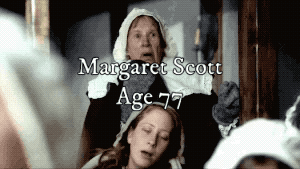
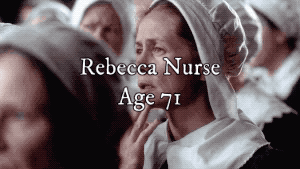

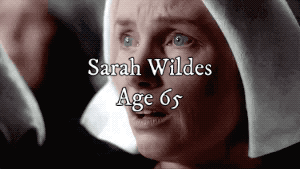




“We see witchcraft, finally, as a deeply ambivalent but violent struggle within women as well as an equally ambivalent but violent struggle against women.” ― Carol F. Karlsen, The Devil in the Shape of a Woman: Witchcraft in Colonial New England
Women executed in the 1692 Salem Witch Trials
1K notes
·
View notes
Photo

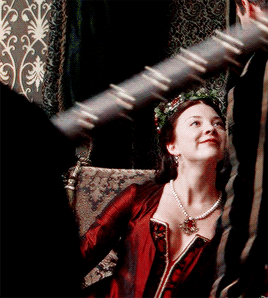


✧ Christmas of 1532 was a particularly lavish celebration for Henry’s court. Anne Boleyn and Henry had secretly married a month prior, and though Anne likely didn’t know it yet, she was carrying Henry’s child. The prior year, the French ambassador had attended a feast hosted by Anne in her chambers, rather than the traditional feast presided over by the king and queen. This year, Anne openly took the place of Katharine, and also resided in the queen’s chambers. Within a month or so, Anne Boleyn would know she was pregnant, and the couple would re-marry on the night of a new moon in the gatehouse at Whitehall palace. Rumors would fly, and Anne would make broad hints as she ruled as queen in all but name, but the marriage would not be officially announced until Easter. [x]
2K notes
·
View notes
Photo


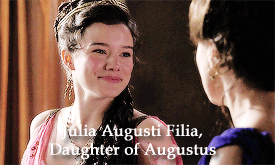
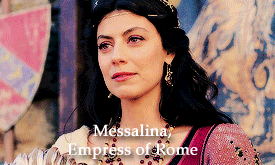

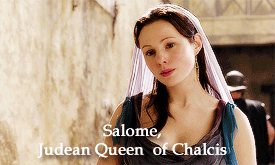




bad girls of ancient history for @salty-winter-adult <3
1K notes
·
View notes
Photo


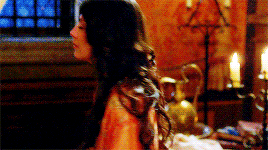





“Anne Boleyn was an extraordinary woman living in very difficult times for women. She did not set out to win the king and she may, at first, have been unsure of exactly what to do with the married Henry. She was unique and she fuelled a great love and lust in Henry which, in spite of his five other wives and numerous mistresses, he had never known before and would never know again. Only Anne Boleyn had the power to occupy Henry VIII’s every waking thought and purpose. With her charm and her outspokenness, Anne was the most remarkable woman the king ever met. For nearly a decade she was always Henry VIII’s passion and his obsession. ” – Elizabeth Norton, Anne Boleyn: Henry VIII’s Obsession // Alessandra Mastronardi as Anne Boleyn
712 notes
·
View notes
Photo








Half a century after her death, the chronicler Raphael Holinshed remembered her as ‘a lady of right commendable regard, courteous, gentle, a good housekeeper, and very bountiful to her servants’. He wrote that there had never been, ‘any quarrels, tale bearings or mischievous intrigues in her court, and she was tenderly loved by her domestics.’
Elizabeth Norton, Anne of Cleves
728 notes
·
View notes
Photo




Women of History Meme: [5] Tragic Women
↳ (1/5) CLEOPATRA VII PHILOPATOR
ruled Egypt for twenty-two years. She lost a kingdom once, regained it, nearly lost it again, amassed an empire, lost it all. A goddess as a child, a queen at eighteen, a celebrity soon thereafter, she was an object of speculation and veneration, gossip and legend, even in her own time. At the height of her power she controlled virtually the entire eastern Mediterranean coast, the last great kingdom of any Egyptian ruler. For a fleeting moment she held the fate of the Western world in her hands. She had a child with a married man, three more with another. She died at thirty nine, a generation before the birth of Christ. Catastrophe reliably cements a reputation, and Cleopatra’s end was sudden and sensational. She has lodged herself in our imaginations ever since. Many people have spoken for her, including the greatest playwrights and poets; we have been putting words in her mouth for two thousand years. In one of the busiest afterlives in history she has gone on to become an asteroid, a video game, a cliché, a cigarette, a slot machine, a strip club, a synonym for Elizabeth Taylor. Shakespeare attested to Cleopatra’s infinite variety. He had no idea.
A capable, clear-eyed sovereign, she knew how to build a fleet, suppress an insurrection, control a currency, alleviate a famine. An eminent Roman general vouched for her grasp of military affairs. Even at a time when women rulers were no rarity she stood out, the sole female of the ancient world to rule alone and to play a role in Western affairs. She was incomparably richer than anyone else in the Mediterranean. And she enjoyed greater prestige than any other woman of her age, as an excitable rival king was reminded when he called, during her stay at his court, for her assassination. (In light of her stature, it could not be done.) Cleopatra descended from a long line of murderers and faithfully upheld the family tradition but was, for her time and place, remarkably well behaved. She nonetheless survives as a wanton temptress, not the last time a genuinely powerful woman has been transmuted into a shamelessly seductive one.
- Stacy Schiff, Cleopatra: A Life
434 notes
·
View notes
Photo


Women of History Meme: [5] Tragic Women
↳ (2/5) KATHERINE HOWARD
“Henry Mannox had been her music teacher. And her cousin, Francis Dereham? He’d been one of those men with access to the key to [her childhood dormitory]. These two men had taken advantage of Catherine. And that’s why it’s so unfair that historians have called her a ‘good-time girl’.
Today we’d call her an abused child.”
-Lucy Worsley, Six Wives With Lucy Worsley
1K notes
·
View notes
Photo








“A woman out of legend. Not in Alexandria, or Rome, or Camelot has there been such a queen.”
-James Goldman, The Lion In Winter
855 notes
·
View notes
Photo







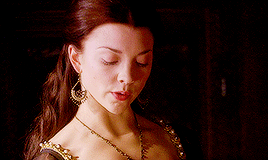
Female Awesome Meme | (1/10) Queens ~ Anne Boleyn (The Tudors)
I know how I got there. And it was not all you. It was not all you or Norfolk or George or any other man you want to name. It was also me. He fell in love with me. He respected me. And my opinions.
1K notes
·
View notes
Photo






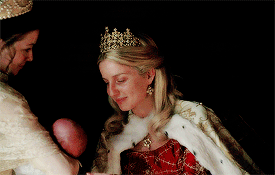

women’s history meme | queens 1/5
Jane Seymour (c.1508 - 24 October 1537) was the third wife of King Henry VIII of England and queen consort from 1536 until 1537. She was the mother of Edward VI of England, and died a natural death less than two weeks after his birth.
Jane Seymour was the child of John Seymour and Margaret Wentworth. She was not educated as much as King Henry’s wives before her, for example, Catherine of Aragon or Anne Boleyn. She could read and write a little but was much better at needlework and managing the house. These were considered much more necessary for women. Jane’s needlework was said to be beautiful and complex. Some of her work was kept till 1652, where it is recorded to have been given to the Seymour family. After her death, it was noted that Henry was an “enthusiasticembroiderer”.
She was a lady-in-waiting to Catherine of Aragon, the first wife of Henry VIII. When Henry divorced his first wife and married Anne Boleyn, Jane continued to be a lady-in-waiting. Henry VIII noticed Jane at court and had already fallen in love with her by the time Anne Boleyn was executed. He became engaged to Jane on the day after the execution, and they were married ten days later, on May 30, 1536. When Jane became queen, she ran the royal court in a strict and formal way, and her close friends were Anne Stanhope and Elizabeth Seymour.
In early 1537, Jane became pregnant and developed a craving for quail. In October of 1537, she gave birth to the son that Henry VIII wanted so much. They named him Edward and he was later to be King Edward VI of England. Soon, Jane became very ill with fever, and she died on October 24, 1537. Jane never had a coronation, and was married to Henry for only a year and a half before she died (May 30, 1536-October 24, 1537). Henry had loved Jane the most of all his wives, because she was the one who gave him a son. Even though he was married another three times after Jane’s death, he always grieved for her. When Henry died, he asked to be buried next to Jane.
883 notes
·
View notes
Text
“…In 1566 [Elizabeth I] told a parliamentary delegation that her reluctance to name a successor stemmed from her experiences in Mary’s reign, which had convinced her that the ‘second person’ in the realm could not avoid becoming the pawn of malcontents and plotters.”
— Anne Somerset, Elizabeth I (via queenbessofyork)
83 notes
·
View notes
Photo




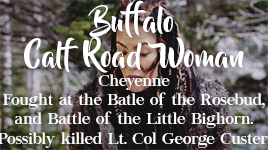



notable indigenous north american women
requested by anonymous
805 notes
·
View notes
Photo


“In his biography of henry’s six wives, historian David Starkey bluntly states, ‘How can a woman like Jane Seymour became Queen of England is a mystery.’ This echoes the thoughts of many at court, and has baffled historians for centuries.. Certainly Chapuys searched in vain for an answer. However, is it really such a mystery? Considering the number of unexpected and inexplicable decisions Henry had made up to this point, marrying a woman who was nothing like his other wives was par for the course.
Anne had been a tempest of life: vivacious, sultry, passionate, and somewhat highly strung. As a maintenance and unable to make the transition to a dutiful wife; Jane was low-maintenance and dutiful.
Jane was Henry’s first serious infatuation since marrying Anne. She has been described as the sixteenth-century man’s (and especially Henry’s) ideal ‘little woman’. The popular myth was that she was soft-spoken, docile and subservient. Perhaps any woman who refrained from publicly berating and chiding Henry would be considered docile after Anne. Jane read Henry’s mood and acted accordingly, something Anne had often failed to do.
However, Tudor historiography argues that Jane could not possibly have been as meek and innocent as she appeared; that her quiet and deferenntial demeanor hid a shrewd and calculating young woman who seized the chance to snare a monarch.
Both Anne and Jane were ladies-in-waiting who seduced the king away from their mistresses; Anne from Katherine and Jane from Anne. The similarity is intriguing; so too is the disconnect, in that history has judged both women so differently. Anne’s harsh treatment of Katherine is often eclipsed by her passionate love affair with Henry and her tragic end. Yet Jane’s usurpation of Anne has tarnished her image. Anne is seen as a victim, but Jane as 'accessory-after-the-fact to the judicial murder of Anne’.
As Chapuys reported, Henry was sailing up the Thames to his betrothed within minutes of the execution of his previous wife. Therefore, the view has arisen that Jane was complicit in her death. Yet there is no evidence that she was an accessory, that law pertains to an individual who receives or assists another person, who is, to his or her knowledge, guilty of any offence against the law. Yet Henry WAS the law. No one at court truly emerged from Anne’s execution and that of the condemned men without some blood on their hands.
We cannot possibly know what Jane may or may not have felt about Anne’s death -there are no accounts of their personal feelings- just as we do not truly know if Anne felt any sympathy for Katherine when she usurped her. Both women had ambitions and played their own personal games of seduction. As with Eustace, we must accept that there are nuanced shades of grey in between the black and white depictions of these two figures.”
-Inside the Tudor Court: Henry VIII and his Six Wives through the writings of Eustace Chapuys by Lauren mackay.
271 notes
·
View notes
